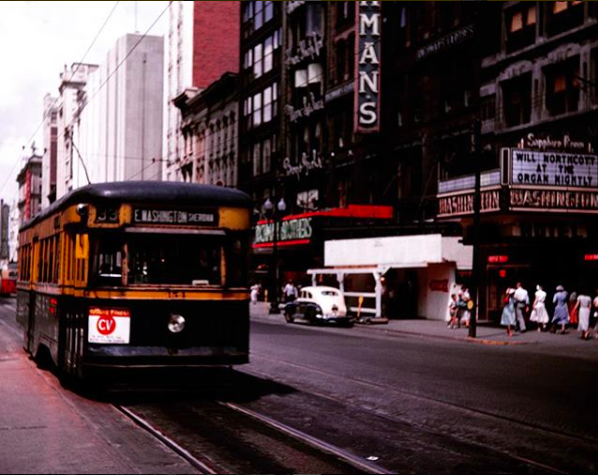From president Austin Mace and the Board of Directors. 2019 was a banner year for the Hoosier Heartland Trolley Company, with a number of projects starting throughout the organization and taking shape. As year-end approaches, please consider a tax-deductible donation to our Electrify 429 campaign or general fund.
Historic rails from College Avenue reunited with last Indianapolis streetcar
Historic rail from Indianapolis’ well-known streetcar system has been awarded to the nonprofit Hoosier Heartland Trolley Company through a collaborative effort amongst Midtown Indy, the Arts Council of Indianapolis and IndyGo. The rail from College Avenue once carried the company’s Indianapolis Railways streetcar No. 153, which is the last one known in existence.
How Adaptive Reuse and Hoosier Passion Preserved Railway Heritage
So, what does a gravel pit office, tire shed, house, an outdoor cabin and a helicopter ride have in common?
-A captivating story full of twists and turns, legendary artifacts from Indiana’s past, and forward-thinking Hoosiers that have worked tirelessly across generations to preserve our world-renowned electric railway heritage.
Nonprofit announces capital campaign to revive one of Indiana’s world-famous interurban railcars
As of 4:29 p.m. on 4/29/2019, a group of young preservationists are pleased to announce the Electrify 429 capital campaign. Electrify 429 is a project of the Hoosier Heartland Trolley Co. to restore Indiana Union Traction Company No. 429 to operation – one of the last remaining interurbans from Indiana’s world-famous electric railroad system of the early 20th century.
Carrying the Torch Forward – Preserving Our Electric Railway Heritage
With the interurban system dissolving in 1941 and streetcar systems converting to buses in the 1950s, many alive today do not remember nor even know the state had one of the world’s greatest transportation networks. In the 1920s, the electric railway system peaked with more than 15,000 operating trolleys and more than 2 million passengers in a year. Cars would depart the traction terminal in Indianapolis (trolley station) nearly every minute for destinations across the state, once passing the steps of the Indiana Statehouse. With the conclusion of the Golden Age of railroading in America, began the railway preservation movement.
Bracing for the future – creation of the Indiana Railroad
Before the traditional steam railroads came along, there were two options for transportation: horse or by foot. The advent of railroads made travel between towns convenient for the first time in Indiana’s history. This level of convenience was increased even further by the services of the interurban railroads. The interurbans wouldn’t only stop in town but could pick up additional passengers at almost any crossing.
-This level of convenience, however, came at a cost to the interurbans.
Sparking a Calling: Our Story
At this point-in-time, our team rolled up our sleeves and entered the scene in crisis mode as part of a serious effort to acquire as many of the remaining electric railway cars as possible. Although beaten and battered, these cars were the last glimpses into an industry that built Indiana into what it is today - a cultural phenomenon that employed thousands, moved millions, and opened Indiana up to economic possibilities never before seen nor contemplated.
Desiring a Better Life - Sparking Opportunity
The level of service delivered by the interurban companies opened up business and educational opportunities to Indiana’s rural citizens during the early 1900s. Rufus Thomas was one of those Hoosiers - sparking a future of opportunity through the interurban system that had never been an option for him.








